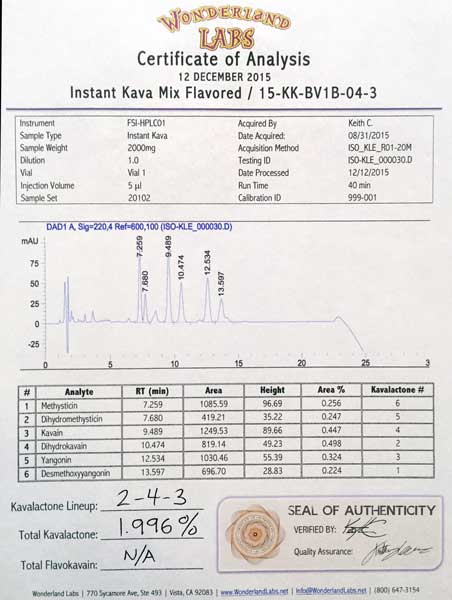COMMON KRATOM PATHOGENS
The topic of what the common Kratom pathogens are is coming up more and more recently. We’ve been testing Kratom (Mitragyna speciosa) for nearly a decade, and have amassed well over 1000 profiles for this curious plant. Only in the past year has the existence of pathogens increased almost logarithmically in tests we conduct in our lab. What used to be only a small percentage of samples that would come up positive for pathogens has turned into a flood.
We only test for the common (and required) pathogens outlined in the FDA guidelines for anything that is intended for consumption in our lab. For the biological side, that means we test for Total Aerobics, Yeast & Mold, Coliforms, E. coli, Salmonella, & Staphylococcus. Each of these pathogens are not naturally-occurring in Kratom, and can reveal a lot about the material you are testing. We can surmise how it was handled, how it was grown, and how professionally it was harvested and processed.
For example, if there’s a high mold count as we’re testing the Kratom leaves, it usually indicates a few critical things:
- The material was picked from the ground, and not from the tree
- The material was stored for a long period of time
- The material was improperly stored, in a damp place
- The material was packed and shipped before it was properly dried
There’s no way to know for sure, but mold count is one of the key indicators that tells you whether the Kratom you tested is fresh, was harvested from living trees, or if it was properly dried and stored. Even freshly-picked leaves from a mature plant can come up with a high mold count if the leaves were dried improperly, or if the leaves were tightly-packed in a container for shipping.
Mitragynine is a sturdy alkaloid, but it can also break down from improper drying of plant material. For example, if leaves are sun dried instead of shade dried, or artificially dried in a heated environment, mitragynine can start to break down after just a couple hours of intense heat. We’ve run a battery of tests in the lab on various types of Kratom, including powder, liquids, and raw leaf material. When we subject the dried material to temperatures above 180 degrees Fahrenheit for more than an hour or two, we do see some degradation in the alkaloid content of the Kratom.
That’s just one aspect of lab testing for common Kratom pathogens. The common pathogens we test for are simply the ones required by the FDA for anything that may be intended for consumption. One of the most disturbing pathogens we’ve found in increasing numbers of Kratom samples in the recent past is E. coli. In fact, another material we test on a regular basis; Kava, has been coming up positive for E. coli far more than we’ve ever seen in the past decade.
Demand is increasing, and competition is growing, so growers and suppliers are under increased pressure to produce enough material to sell to their customers. This seems to result in more pathogens appearing in the Kratom we test here in the lab. E. coli doesn’t naturally-occur in Kratom leaves; it can only be introduced if there is fecal matter introduced anywhere during the harvesting process.
Unlike Kava, which is a root that grows in the ground, Kratom is a leaf up on a tree. Even if there is E. coli in the water used to water the KRatom trees, the E. coli won’t make it into the leaves themselves. It can only be introduced if it falls into contaminated soil, or if good hygiene isn’t in place for the harvesters or the processing and storage area.
More and more Kava requires further processing in order to make it safe for consumption. Now that more and more vendors are working towards selling Kratom for consumption, it’s increasingly critical to ensure the safety of customers. The only way to do this is to test for the common pathogens in Kratom in a lab such as Wonderland-Labs. This way, you are not only protecting yourself, you’re protecting any potential customers as well.
In addition to common pathogens often found in Kratom, we are amassing a database of common adulterants found in Kratom as well. It’s surprising to see what adulterants end up in what is supposed to be pure powdered leaf. Maltodextrin is high on the list, as is Mitragyna Javanica, as well as powdered leaf material that has already been extracted.
It may sound difficult to believe, but we’ve had more than a few samples arrive at the lab for testing, only to find out that the material we’re testing is expended leaf, or leaf that was extracted of its alkaloids and then discarded. The importance of testing is a small price to pay for the insurance against wasting your money on counterfeit product, adulterated product, or improperly handled product that would actually harm anyone who chose to consume it.
WHY CERTIFICATES OF ANALYSIS?

CONTACT US
1341 Distribution Way, Ste 16, Vista, CA 92081
Email: info@wonderland-labs.com
Phone: (800) 647-3154
Call us TOLL FREE
GET A NO-OBLIGATION QUOTE | OUR FAQ’s
OPERATING HOURS: 8-4, Monday – Friday, PT

